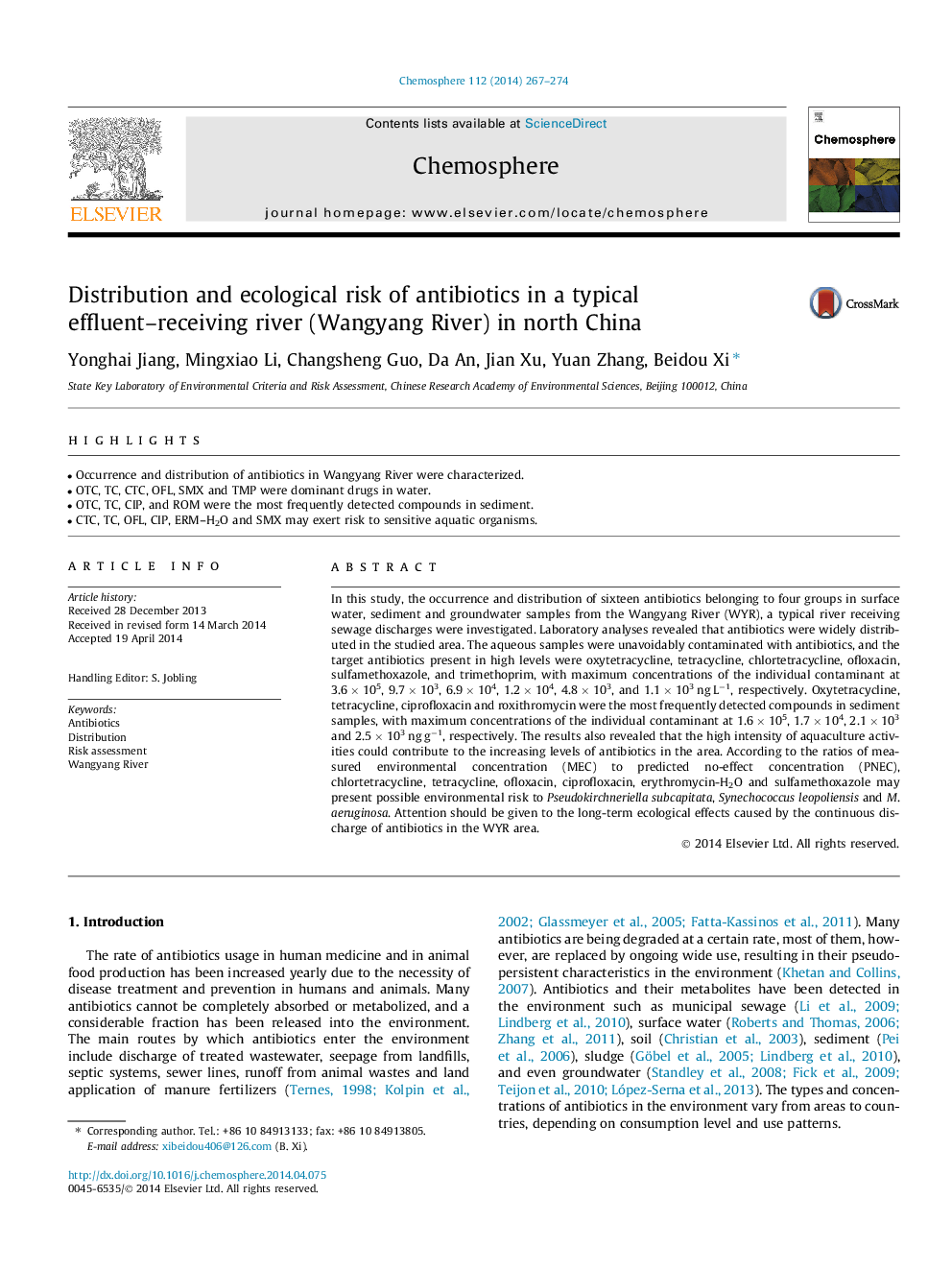| Article ID | Journal | Published Year | Pages | File Type |
|---|---|---|---|---|
| 6308811 | Chemosphere | 2014 | 8 Pages |
Abstract
In this study, the occurrence and distribution of sixteen antibiotics belonging to four groups in surface water, sediment and groundwater samples from the Wangyang River (WYR), a typical river receiving sewage discharges were investigated. Laboratory analyses revealed that antibiotics were widely distributed in the studied area. The aqueous samples were unavoidably contaminated with antibiotics, and the target antibiotics present in high levels were oxytetracycline, tetracycline, chlortetracycline, ofloxacin, sulfamethoxazole, and trimethoprim, with maximum concentrations of the individual contaminant at 3.6 Ã 105, 9.7 Ã 103, 6.9 Ã 104, 1.2 Ã 104, 4.8 Ã 103, and 1.1 Ã 103 ng Lâ1, respectively. Oxytetracycline, tetracycline, ciprofloxacin and roxithromycin were the most frequently detected compounds in sediment samples, with maximum concentrations of the individual contaminant at 1.6 Ã 105, 1.7 Ã 104, 2.1 Ã 103 and 2.5 Ã 103 ng gâ1, respectively. The results also revealed that the high intensity of aquaculture activities could contribute to the increasing levels of antibiotics in the area. According to the ratios of measured environmental concentration (MEC) to predicted no-effect concentration (PNEC), chlortetracycline, tetracycline, ofloxacin, ciprofloxacin, erythromycin-H2O and sulfamethoxazole may present possible environmental risk to Pseudokirchneriella subcapitata, Synechococcus leopoliensis and M. aeruginosa. Attention should be given to the long-term ecological effects caused by the continuous discharge of antibiotics in the WYR area.
Related Topics
Life Sciences
Environmental Science
Environmental Chemistry
Authors
Yonghai Jiang, Mingxiao Li, Changsheng Guo, Da An, Jian Xu, Yuan Zhang, Beidou Xi,
